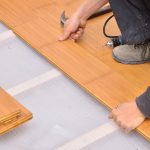We are expecting a typical Québec winter this year. That means cold weather, snow storms, and humidity. Should you reconsider your home’s insulation? If so, this is the perfect occasion to take your first Eco-friendly step. Plus, you will save on heating costs.
Good insulation means improved comfort, protection against outside noise and energy efficiency; hence, the importance of having an adequate insulation system.

First off, here is some basic knowledge. Since hot air tends to rise to make room for the cold air that is flowing down, the roof’s insulation is a top priority. Do not overlook the insulation of the piping system, even if it seems trivial. And remember, properly installed insulation means zero heat loss; therefore, no seams nor openings.
According to many experts, ecological insulation materials are more energy efficient than mineral wool insulators. You can expect less condensation because the ecological insulator is more breathable. In addition, they are less irritating to the skin during the installation. Ecological insulators are not as energy intensive to make as mineral wool, with a few exceptions.
Cellulose fibre, made from recycled paper, is one of the most popular ecological insulators because of its price, efficiency, and quality. Cellulose wadding, among others, provides a more balanced temperature, both in summer and winter. Some even describe it as the most efficient ecological insulator. The cellulose board, if not overlooked, is at the bottom of the ecological insulation list.
Hemp wool is a popular insulation material. The property of this annual plant never ceases to amaze the human being, who has been exploiting it for thousands of years. Hemp requires no pesticides to grow. Some homes are built of hemp bricks. This shows all the potential that this plant has to offer in terms of housing.
Cork is a material with multiple properties, too many to list here. It is known to be an extremely efficient sound absorber and it is also water-repellent, which makes it an excellent insulator in the bathroom. It is frequently used to insulate cold rooms as well.
Is there anything more natural, recyclable and renewable than sheep wool? And we all know how efficient it is to protect the animal from any type of weather imaginable. If the wool protects the sheep, why not the home? Its ability to control moisture is such that the building does not require a vapour barrier.
Flax wool is an insulation material that has been making its mark for centuries. It is made of recycled material, and it can even be composted.
Wood wool is made from recycled wood. It is known to be very efficient in keeping cool during the hot summer months.
Some mineral insulators are considered environmentally friendly, but they are at the bottom of the list because making them is very energy intensive. These materials need to be heated to very high temperatures, such as vermiculite, cellular glass made of recycled glass and perlite, which is a natural volcanic rock.
There are other ecological insulators: clay, mud, cotton wool and even algae. However, not all of the materials listed above are necessarily available in Québec. Check with renovation centres or dealers specialized in recycled building materials.
Most ecological insulation options are made of recycled materials, so they are easy to recycle. They are renewable, and not much energy is required to make them. And many are treated with boron salt to resist fire.
Images: iStock.com


